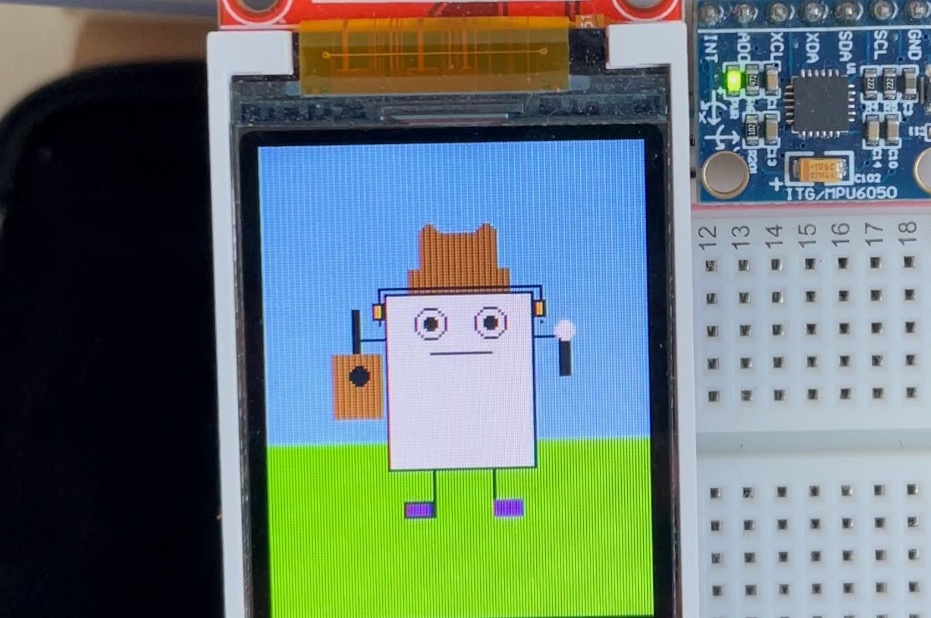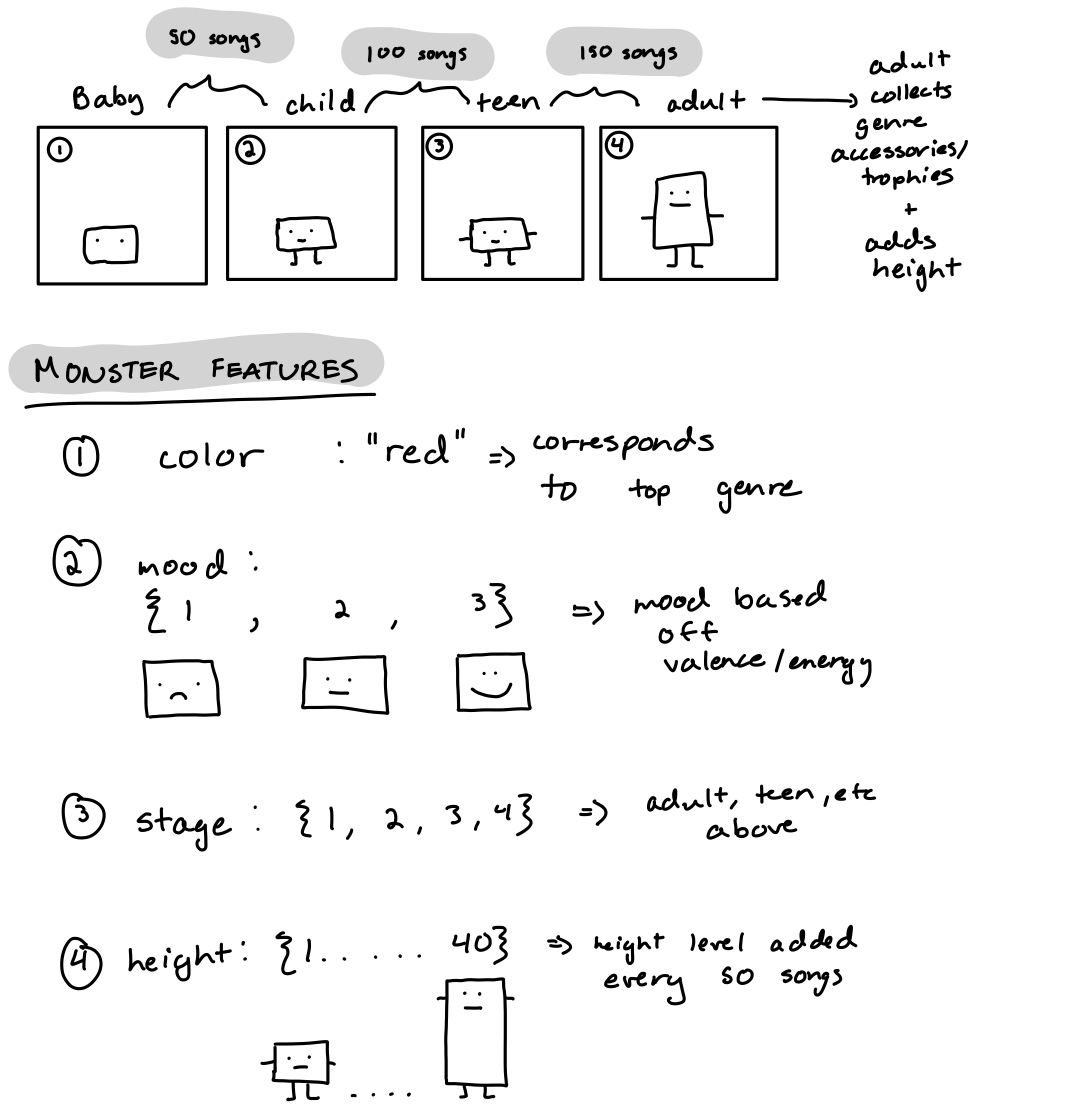In the spring of my sophomore year, I took MIT's embedded systems class. For the final project, my group and I created a network of Tamagotchi-like creatures that were fed based off Spotify listening history.
We used a Python web server, SQL database, Arduino with C++, and the Spotify API. We also created a web interface to view other monsters and compatibility scores between users.

Introduction
The Spotify Monster is a social network of Tamagotchi-like creatures that are fed based off Spotify listening history.
The more music you listen to, the more your monster will grow. And as the monster grows, it will reflect the type of music you listen to.
Monster Design
The monster's appearance is based off the user's music taste. The design elements include body color, mood, age height, and trophy accessories.
Body Color
The monster's body color corresponds to the user's top listened to genre. The color codes are as follows:
Pop: pink
Country: orange
Rap: purple
Instrumental: yellow
Electronic: green
Rock/Alt: red
Mood
Based off a user's listened to songs' valence, energy, and danceability, we compute a mood score. This then correlates to 3 different facial expressions for the monster: [0] sad, [1] neutral, or [2] happy.
Age Stage
When a user first starts listening, their monster is a baby. As they listen to more songs, their monster will grow legs, arms, height, and trophy accessories.
After 50 songs, the monster grows legs.
After 100 songs, the monster grows arms.
After 150 songs, the monster can start growing in height.
We didn't want to put a ceiling on how much the monster could develop. So, after a user listens to 150 songs, they earn an extra pixel of height.
Trophy Accessories
After listening to 500 songs in a certain genre, a user can unlock a monster accessory for that genre. The accessories are as follows:
Pop: microphone
Country: cowboy hat
Rap: gold chain
Instrumental: music stand
Techno: DJ turntable
Rock/Alt: electric guitar
Example Monster
Below is a tall monster with a netural mood, arms, and legs. It also has a headphone, cowboy hat, and microphone accessory.

Chicken Scratch
Below are some preliminary doodles of the monster design.

System Modes
Single User Mode
A user can view music listening stats and play with their monster.
You can make your monster dance and jump.

Multi User Mode
Two monsters can interact with each other across Arduinos.
If the users' listening history is highly compatible, the Arduinos will dance with each other on the screen.
In the case below, they give a "thumbs up" to each other, inidicating they are moderately compatible.

Web Interface
On the web interface, users can view all the monsters in the network. Compatibility scores and recommended songs are generated between users.
The compatibility score is generated using a sigmoid function based on how similar the users' music tastes are.

System Specs
Below is the system diagram for the project.
The Arduino is connected to a speaker and a screen. The Arduino communicates with the Python web server for rendering calls. The web server communicates with the SQL database, Spotify API, and voice recognition endpoint.

Project Video